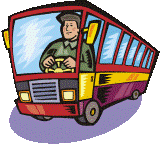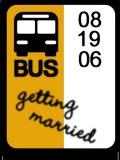Car free but like to party? Some tips from last week’s Real Change column:
A few weeks ago, you learned how to look fabulous while riding the bus. Now, let’s explore how to take your fabulous self out for the evening.
If you’ve followed the first rule of car-free living — move to a transit-friendly neighborhood, preferably close to downtown — you’ll find plenty of options for eating, drinking, dancing, watching, listening, and meeting a short walk or bus ride from your home. With no car to worry about, you can hop on the bus to Benaroya Hall or Belltown without giving a second thought to parking availability or costs. If you want to have a few drinks while you’re out (remember, I said a few), go ahead. After all, you’re not driving home.
Going out without a car does require some adjustments. Even in the most transit-friendly areas, your travel is limited by bus schedules. (I call this phenomenon the Buschickrella Syndrome.) If the last bus leaves before you are ready to end your night, you can use a few of the thousands of dollars you’ve saved on transportation to take a cab.
Spontaneous trips to inconvenient locations will require planning and will therefore happen far less frequently, but if you are willing to take advantage of the many dining and entertainment opportunities you can reach on the bus or on foot, you will hardly notice this.
Attending private parties without a car can also be a challenge. Unlike a movie or a concert, a party doesn’t have a specified end time. If it’s fun, you’ll probably want to stay until they kick you out of the joint. Unfortunately, unless all your friends have been wise enough to choose transit-friendly neighborhoods, many of the parties you are invited to are likely to be in areas with spotty (or nonexistent) late-night bus service.
You can rent a Flexcar for these occasions, but since Flexcar charges by the hour, and the car will spend most of the evening parked in someone’s driveway, I recommend it only as a last resort. Carpooling is sometimes an option. (Evite has streamlined this process by building a carpooling option into their software.) If you carpool, make sure to offer the driver gas money so the ride is mutually beneficial.
Usually, the best option will be to work with the bus service that’s available. If you opt to ride the bus, make sure you:
• Know how often the route you’re riding runs and when the last one leaves.
• Let the host know in advance that you have to leave at a specific time. A sudden and unexpected departure is often met with protest.
• Plan to leave at least 15 minutes earlier than you think you need to. It’s no fun to rush out the door without a proper goodbye.Besides, you wouldn’t want the other guests to see you without your glass slippers.



